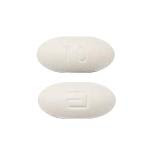
Children should be getting sex education lessons when they start school, according to a leading medical figure.
The call comes amid fears that many teenagers are exposing themselves to risk because the safe sex message is being left too late.
Dr Charles Saunders, chairman of the British Medical Association's Scottish consultants' committee, also says secondary schools should hand out condoms and other forms of contraception to older children.
Saunders, a consultant in public health medicine at NHS Fife, told the Scotland on Sunday newspaper: "It needs to start at quite an early age, because if you leave it until they are 12 it is too late because some are already experimenting.
"It probably needs to be started off when children start school. You need to start laying the groundwork to help them and empower them to make decisions and turn things down."
Scotland's sexual health record is one of the poorest in the western world. Teenage pregnancies are on the rise with 9,040 in 2005, the latest year for which figures are available, compared with 8,891 in 2004. Cases of sexually-transmitted diseases are also rising.
Dr Saunders said that lessons could start off with "simple concepts" in the same way as other subjects, adding: "It could start off with how babies are made and progress from there. Basically sex education needs to be a whole lot better."
As well as the dangers of infection, lessons should also cover the pros and cons of having sex or waiting.
Dr Saunders added that particularly in rural areas, schools may well be the only way that pupils can access contraception. "It may well be that as time goes on it would make sense to have emergency contraception in schools," he said.
The Scottish Government allows local authorities and head teachers to set their own sex education policies, but most children do not learn about sex until Primary Six or Seven, when they are 10 or 11.




























